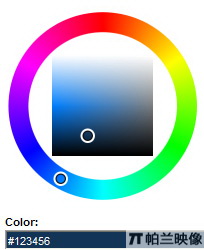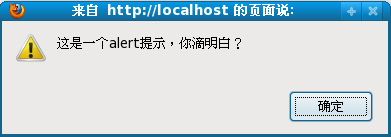|
|
this
this表示當(dāng)前對(duì)象,如果在全局作用范圍內(nèi)使用this,則指代當(dāng)前頁(yè)面對(duì)象window; 如果在函數(shù)中使用this,則this指代什么是根據(jù)運(yùn)行時(shí)此函數(shù)在什么對(duì)象上被調(diào)用。 我們還可以使用apply和call兩個(gè)全局方法來改變函數(shù)中this的具體指向。
先看一個(gè)在全局作用范圍內(nèi)使用this的例子:
<script type="text/Javascript"> console.log(this === window); // true console.log(window.alert === this.alert); // true console.log(this.parseInt("021", 10)); // 10 </script>
函數(shù)中的this是在運(yùn)行時(shí)決定的,而不是函數(shù)定義時(shí),如下:
// 定義一個(gè)全局函數(shù) function foo() { console.log(this.fruit); } // 定義一個(gè)全局變量,等價(jià)于window.fruit = "apple"; var fruit = "apple"; // 此時(shí)函數(shù)foo中this指向window對(duì)象 // 這種調(diào)用方式和window.foo();是完全等價(jià)的 foo(); // "apple" // 自定義一個(gè)對(duì)象,并將此對(duì)象的屬性foo指向全局函數(shù)foo var pack = { fruit: "orange", foo: foo }; // 此時(shí)函數(shù)foo中this指向window.pack對(duì)象 pack.foo(); // "orange"
全局函數(shù)apply和call可以用來改變函數(shù)中this的指向,如下:
// 定義一個(gè)全局函數(shù) function foo() { console.log(this.fruit); } // 定義一個(gè)全局變量 var fruit = "apple"; // 自定義一個(gè)對(duì)象 var pack = { fruit: "orange" }; // 等價(jià)于window.foo(); foo.apply(window); // "apple" // 此時(shí)foo中的this === pack foo.apply(pack); // "orange" 注:apply和call兩個(gè)函數(shù)的作用相同,唯一的區(qū)別是兩個(gè)函數(shù)的參數(shù)定義不同。
因?yàn)樵?a href=/itjie/Javajishu/ target=_blank class=infotextkey>JavaScript中函數(shù)也是對(duì)象,所以我們可以看到如下有趣的例子:
// 定義一個(gè)全局函數(shù) function foo() { if (this === window) { console.log("this is window."); } } // 函數(shù)foo也是對(duì)象,所以可以定義foo的屬性boo為一個(gè)函數(shù) foo.boo = function() { if (this === foo) { console.log("this is foo."); } else if (this === window) { console.log("this is window."); } }; // 等價(jià)于window.foo(); foo(); // this is window. // 可以看到函數(shù)中this的指向調(diào)用函數(shù)的對(duì)象 foo.boo(); // this is foo. // 使用apply改變函數(shù)中this的指向 foo.boo.apply(window); // this is window.
prototype
我們已經(jīng)在第一章中使用prototype模擬類和繼承的實(shí)現(xiàn)。 prototype本質(zhì)上還是一個(gè)JavaScript對(duì)象。 并且每個(gè)函數(shù)都有一個(gè)默認(rèn)的prototype屬性。
如果這個(gè)函數(shù)被用在創(chuàng)建自定義對(duì)象的場(chǎng)景中,我們稱這個(gè)函數(shù)為構(gòu)造函數(shù)。 比如下面一個(gè)簡(jiǎn)單的場(chǎng)景:
// 構(gòu)造函數(shù) function Person(name) { this.name = name; } // 定義Person的原型,原型中的屬性可以被自定義對(duì)象引用 Person.prototype = { getName: function() { return this.name; } } var zhang = new Person("ZhangSan"); console.log(zhang.getName()); // "ZhangSan" 作為類比,我們考慮下JavaScript中的數(shù)據(jù)類型 - 字符串(String)、數(shù)字(Number)、數(shù)組(Array)、對(duì)象(Object)、日期(Date)等。 我們有理由相信,在JavaScript內(nèi)部這些類型都是作為構(gòu)造函數(shù)來實(shí)現(xiàn)的,比如: // 定義數(shù)組的構(gòu)造函數(shù),作為JavaScript的一種預(yù)定義類型 function Array() { // ... } // 初始化數(shù)組的實(shí)例 var arr1 = new Array(1, 56, 34, 12); // 但是,我們更傾向于如下的語法定義: var arr2 = [1, 56, 34, 12];同時(shí)對(duì)數(shù)組操作的很多方法(比如concat、join、push)應(yīng)該也是在prototype屬性中定義的。
實(shí)際上,JavaScript所有的固有數(shù)據(jù)類型都具有只讀的prototype屬性(這是可以理解的:因?yàn)槿绻薷牧诉@些類型的prototype屬性,則哪些預(yù)定義的方法就消失了), 但是我們可以向其中添加自己的擴(kuò)展方法。
// 向JavaScript固有類型Array擴(kuò)展一個(gè)獲取最小值的方法 Array.prototype.min = function() { var min = this[0]; for (var i = 1; i < this.length; i++) { if (this[i] < min) { min = this[i]; } } return min; }; // 在任意Array的實(shí)例上調(diào)用min方法 console.log([1, 56, 34, 12].min()); // 1
注意:這里有一個(gè)陷阱,向Array的原型中添加擴(kuò)展方法后,當(dāng)使用for-in循環(huán)數(shù)組時(shí),這個(gè)擴(kuò)展方法也會(huì)被循環(huán)出來。
下面的代碼說明這一點(diǎn)(假設(shè)已經(jīng)向Array的原型中擴(kuò)展了min方法):
var arr = [1, 56, 34, 12]; var total = 0; for (var i in arr) { total += parseInt(arr[i], 10); } console.log(total); // NaN 解決方法也很簡(jiǎn)單: var arr = [1, 56, 34, 12]; var total = 0; for (var i in arr) { if (arr.hasOwnProperty(i)) { total += parseInt(arr[i], 10); } } console.log(total); // 103
constructor
constructor始終指向創(chuàng)建當(dāng)前對(duì)象的構(gòu)造函數(shù)。比如下面例子:
// 等價(jià)于 var foo = new Array(1, 56, 34, 12); var arr = [1, 56, 34, 12]; console.log(arr.constructor === Array); // true // 等價(jià)于 var foo = new Function(); var Foo = function() { }; console.log(Foo.constructor === Function); // true // 由構(gòu)造函數(shù)實(shí)例化一個(gè)obj對(duì)象 var obj = new Foo(); console.log(obj.constructor === Foo); // true // 將上面兩段代碼合起來,就得到下面的結(jié)論 console.log(obj.constructor.constructor === Function); // true
但是當(dāng)constructor遇到prototype時(shí),有趣的事情就發(fā)生了。
我們知道每個(gè)函數(shù)都有一個(gè)默認(rèn)的屬性prototype,而這個(gè)prototype的constructor默認(rèn)指向這個(gè)函數(shù)。如下例所示:
function Person(name) { this.name = name; }; Person.prototype.getName = function() { return this.name; }; var p = new Person("ZhangSan"); console.log(p.constructor === Person); // true console.log(Person.prototype.constructor === Person); // true // 將上兩行代碼合并就得到如下結(jié)果 console.log(p.constructor.prototype.constructor === Person); // true 當(dāng)時(shí)當(dāng)我們重新定義函數(shù)的prototype時(shí)(注意:和上例的區(qū)別,這里不是修改而是覆蓋), constructor的行為就有點(diǎn)奇怪了,如下示例: function Person(name) { this.name = name; }; Person.prototype = { getName: function() { return this.name; } }; var p = new Person("ZhangSan"); console.log(p.constructor === Person); // false console.log(Person.prototype.constructor === Person); // false console.log(p.constructor.prototype.constructor === Person); // false 為什么呢? 原來是因?yàn)楦采wPerson.prototype時(shí),等價(jià)于進(jìn)行如下代碼操作:
Person.prototype = new Object({ getName: function() { return this.name; } }); 而constructor始終指向創(chuàng)建自身的構(gòu)造函數(shù),所以此時(shí)Person.prototype.constructor === Object,即是: function Person(name) { this.name = name; }; Person.prototype = { getName: function() { return this.name; } }; var p = new Person("ZhangSan"); console.log(p.constructor === Object); // true console.log(Person.prototype.constructor === Object); // true console.log(p.constructor.prototype.constructor === Object); // true 怎么修正這種問題呢?方法也很簡(jiǎn)單,重新覆蓋Person.prototype.constructor即可: function Person(name) { this.name = name; }; Person.prototype = new Object({ getName: function() { return this.name; } }); Person.prototype.constructor = Person; var p = new Person("ZhangSan"); console.log(p.constructor === Person); // true console.log(Person.prototype.constructor === Person); // true console.log(p.constructor.prototype.constructor === Person); // true
下一章我們將會(huì)對(duì)第一章提到的Person-Employee類和繼承的實(shí)現(xiàn)進(jìn)行完善。
JavaScript技術(shù):JavaScript 繼承詳解(二),轉(zhuǎn)載需保留來源!
鄭重聲明:本文版權(quán)歸原作者所有,轉(zhuǎn)載文章僅為傳播更多信息之目的,如作者信息標(biāo)記有誤,請(qǐng)第一時(shí)間聯(lián)系我們修改或刪除,多謝。



